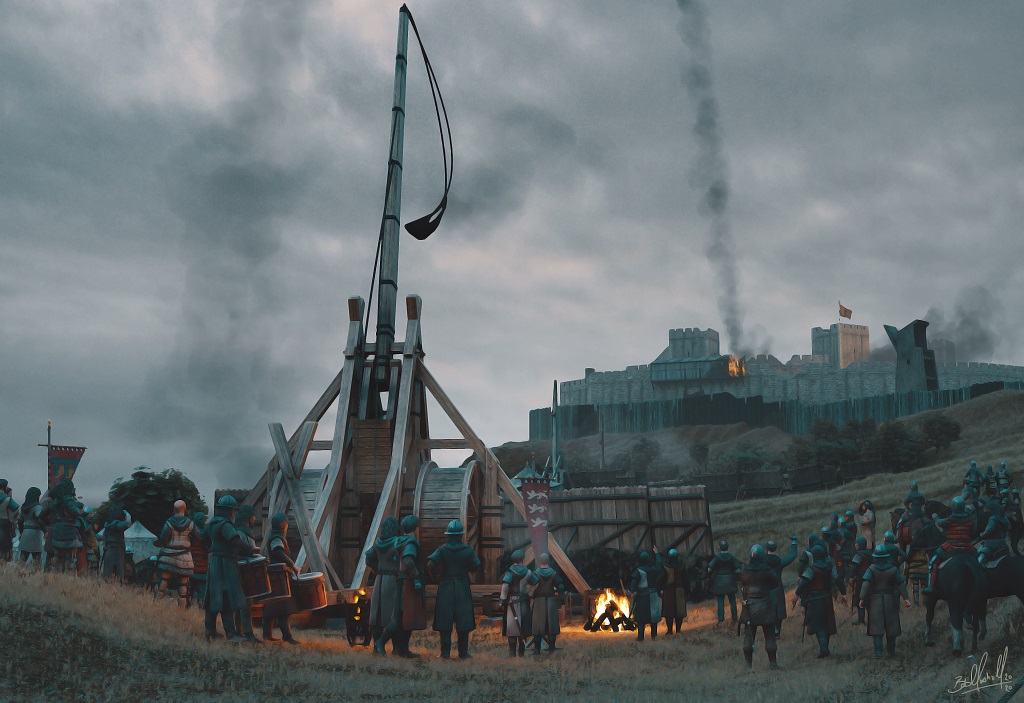Robert the Bruce looking on as the terrifying trebuchet flings a pot of “Greek fire” at Stirling Castle makes a memorable opening scene to the epic film Outlaw King. But it’s quite likely that this dramatic episode really happened, and that the War Wolf isn’t just the stuff of legend!
A show of resistance
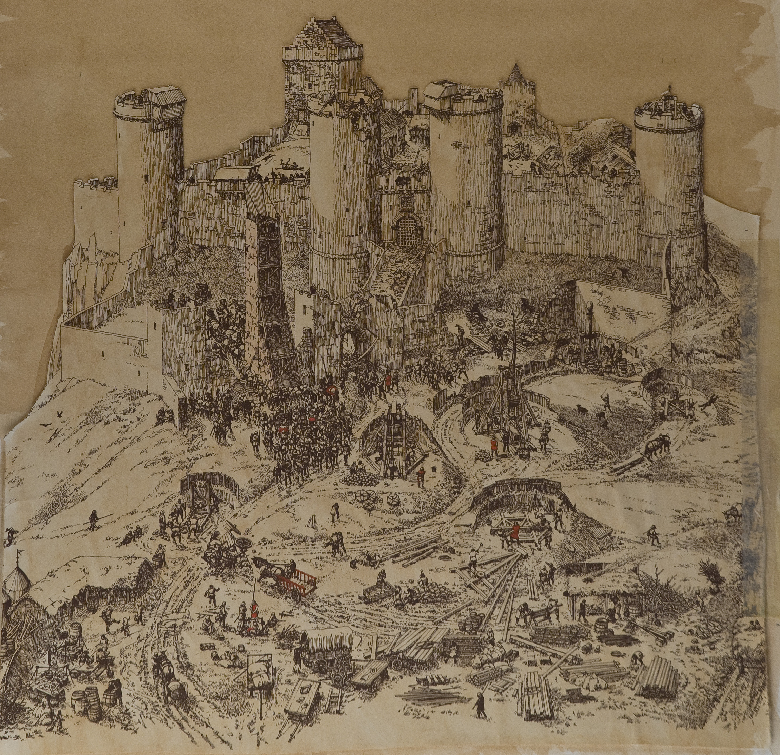
An illustration by Jim Proudfoot showing the siege of Stirling Castle in 1304.
After defeating William Wallace at the Battle of Falkirk in 1298, Edward I of England needed a further six years to grasp full control of Scotland. But by April 1304, nearly all of Scotland had been reconquered by “the Hammer of the Scots”.
William Wallace was hiding in the countryside, soon to be betrayed to the English. The Scottish nobles had surrendered, submitting to Edward’s rule in exchange for the return of their lands. Only at Stirling Castle did any resistance remain.
Sir William Oliphant was the governor and held the castle with about 25 men. On the ramparts, he still defiantly flew the Lion Rampant flag, a symbol of the Scottish crown. In March, Edward had the garrison declared outlaws at his parliament at St Andrews. Preparations began to extinguish the final glimmer of resistance in Scotland.
A show of strength
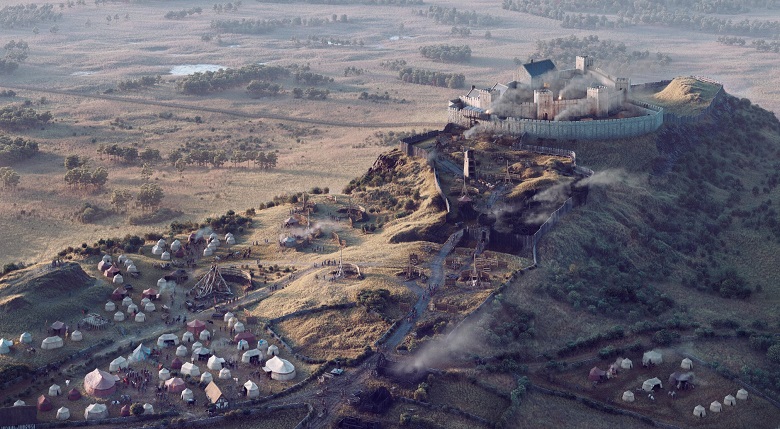
Part of a digital reconstruction by Bob Marshall showing how the 1304 siege might have looked
Edward decided to flex his authority in Scotland as he prepared to travel to Stirling. He no longer had to rely on troops and supplies from England alone. Now, he could order his Scottish subjects to help him take their individual castles.
Scottish earls and lords were ordered to send men and horses to Stirling to assist the siege effort. They were also told not to allow their people to try and provision the garrison. Edward did not just want men, though; Stirling was one of the most defensible castles in Scotland and it would require more than bows and arrows alone for it to fall.
Materials for siege engines were shipped from Newcastle and Edward ordered the churches in Scotland to strip their roofs of lead and send it to Stirling. On top of “all the iron and great stones of Glasgow”, five carts from Brechin, 12 from Dunfermline and 22 from St Andrews arrived at the castle filled with lead to be used by the English engineers for their siege engines. By the time Edward arrived at Stirling on the 22 April, the siege was ready to begin.
Oliphant attempted to delay the inevitable by asking for permission to send a messenger to the guardian of Scotland, John de Soules. Considering that de Soules was in France at the time, his request was unsurprisingly denied.
Rain of fire
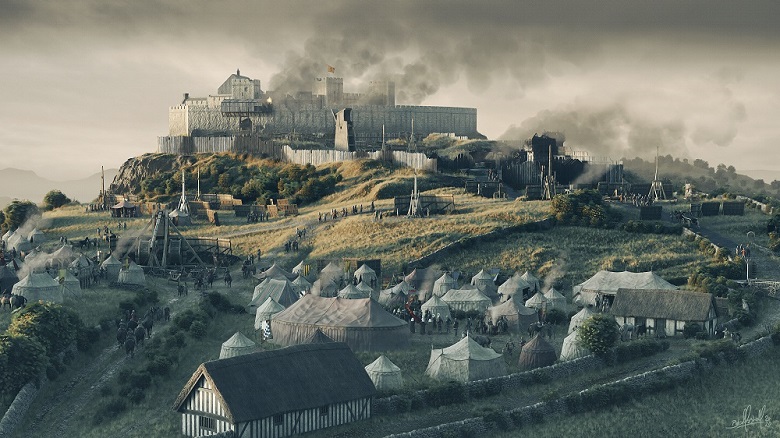
Stirling Castle and the siege camp in Bob Marshall’s ‘Wolf at the Door’
When the bombardment began, the “Hammer of the Scots” appears to have wanted to simply pummel this last stronghold of Scottish independence into submission.
To do so, he arranged possibly the largest array of siege engines ever assembled by the kingdom of England. The Scots were to be left with no doubt about what another uprising would bring. 13 catapults and trebuchets hurled projectiles at the castle day and night.
Robert the Bruce, the future king of Scots, was said to have been present during at least part of the siege. In fact, he provided Edward with several siege engines. It’s possible that Bruce’s experience at Stirling contributed to his policy of destroying castles during his own campaign against England.
Against all odds, Stirling Castle held out against Edward’s siege. For three months, Edward watched on as the catapults flung boulders and fire at the castle walls. He was determined to see it fall.
Oliphant must have been fairly surprised too. The defences were holding out and still had plenty of salted beef to feed the men. Little did he know that Edward’s engineers had been working on something special…
The War Wolf
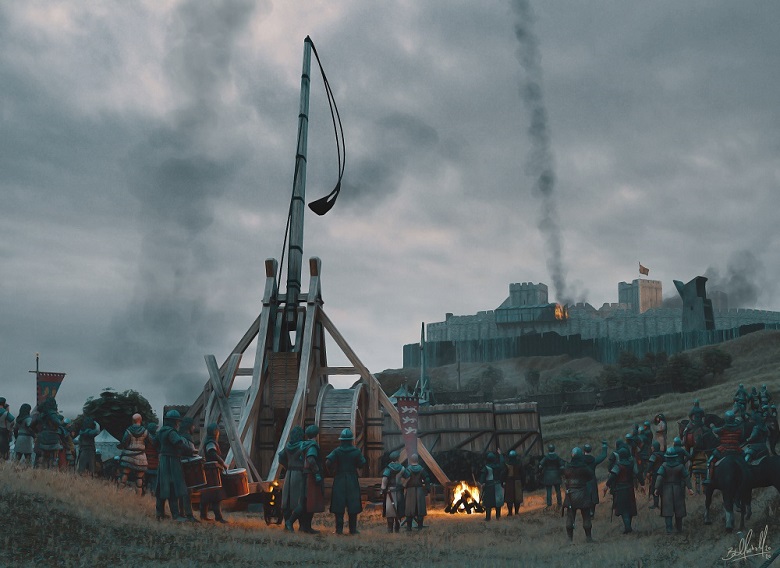
Bob Marshall’s interpretation of the War Wolf.
Five master carpenters and 50 workmen had been tirelessly assembling massive wooden beams, winches and an enormous counterweight into one of the largest trebuchets ever. When Oliphant saw it in its final stages of construction he knew that it was over. He surrendered in an attempt to save his men and the castle from the destructive power of Edward’s hugely expensive new toy.
However, Edward was not in a particularly generous mood. This was to be the final nail in the coffin of the Scots and he wanted them to know it. He had a gallery constructed for the ladies of the court to view this humiliating spectacle. The fearsome engine was christened the “the War Wolf”.
When its 140kg missile was released, it shattered Stirling Castle’s curtain wall. Oliphant and his men were publicly humiliated and sent to England for imprisonment.
A public humiliation
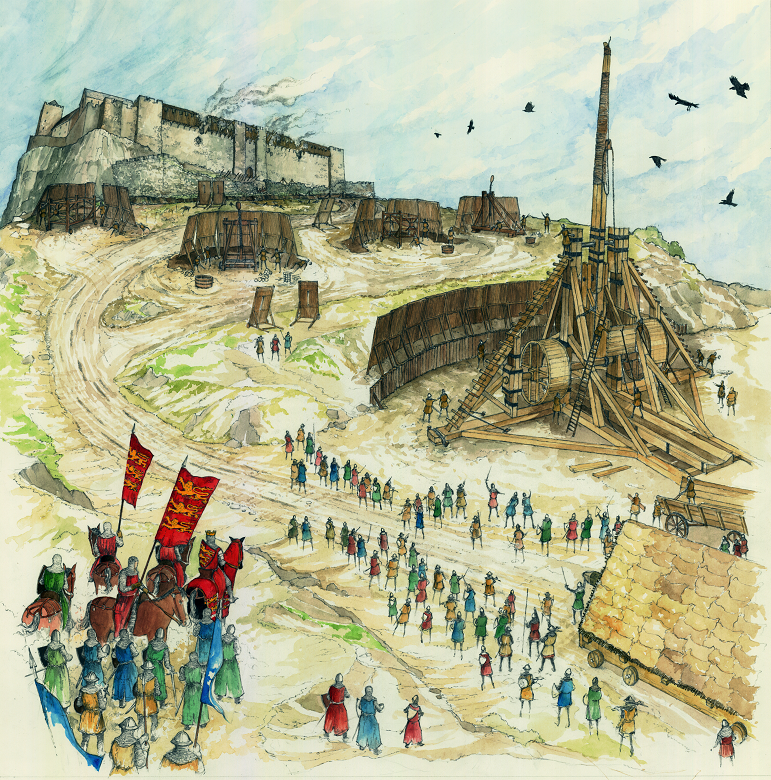
An interpretation of the siege by Heath Gwynn
The siege had shown the overwhelming resources Edward had at his disposal and his attitude towards Scotland. This was not merely a military operation. Unlike most sieges, Edward did not want to break the castle’s mighty walls just to gain a military advantage, Oliphant had already given up. Instead, he designed a piece of pure political theatre. He did not allow the garrison to surrender, so he could make a public spectacle of his power in the form of the world’s largest trebuchet.
Edward wanted to quench any thirst for resistance in grand and ultimately humiliating style. In showing himself to be overwhelmingly powerful and resourceful, it was not just Scottish military forces that he wanted to crush, it was the idea of an independent Scottish kingdom, an idea of which he had become the destroyer. It was in this atmosphere of total defeat that a young Robert the Bruce launched his campaign to become king of Scots.
Reconstructing the War Wolf
The digital images above are taken from ‘Wolf at the Door’, a visual interpretation by artist Bob Marshall. You’ll find Bob’s work on interpretation panels at Stirling Castle, and at some other Historic Scotland sites.
Bob was partly inspired by that opening scene from Outlaw King when he took on the project, which he’s described as one of his largest and most complex. In total, ‘Wolf at Door’ took over 500 hours to complete – we think that’s time well spent to achieve such an amazing and detailed reconstruction of what the War Wolf might have looked like!
You can read a detailed account of the project on Bob’s website.
See more Stirling
Want more stories from Stirling Castle? Then head on over to the dedicated section of the blog where there’s tales of queens, kings, tournaments and ghosts.
And if you’re visiting us at the castle, look out for our brand-new Stirling Castle guidebook, which will be hitting the shelves soon. It’s packed with research, reconstructions and riveting reads to enhance your experience of the iconic stronghold.

